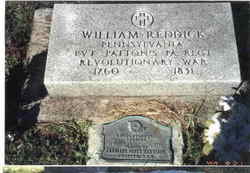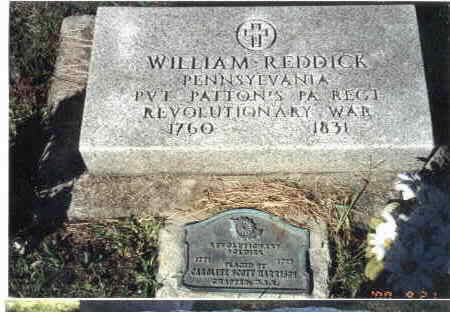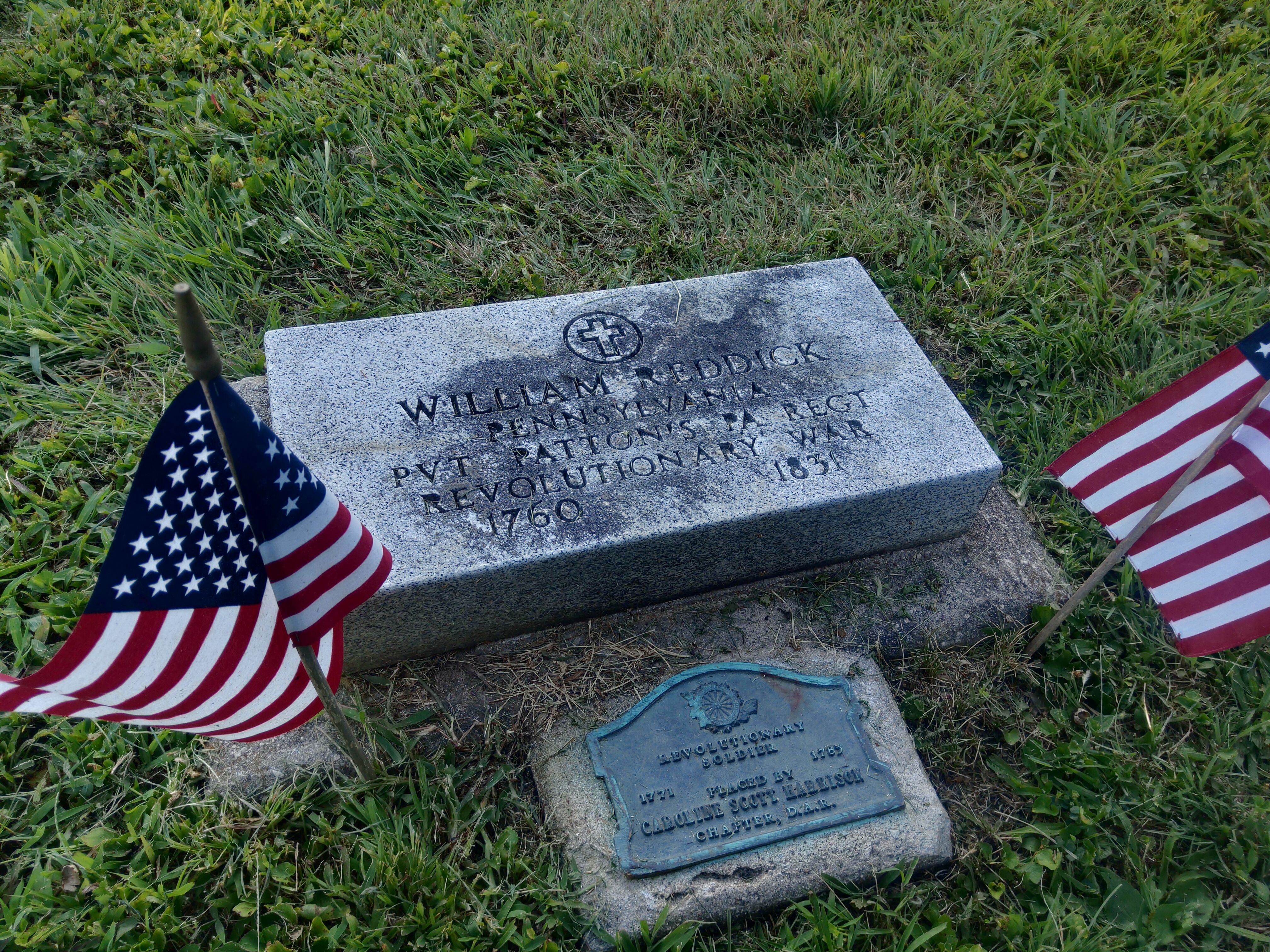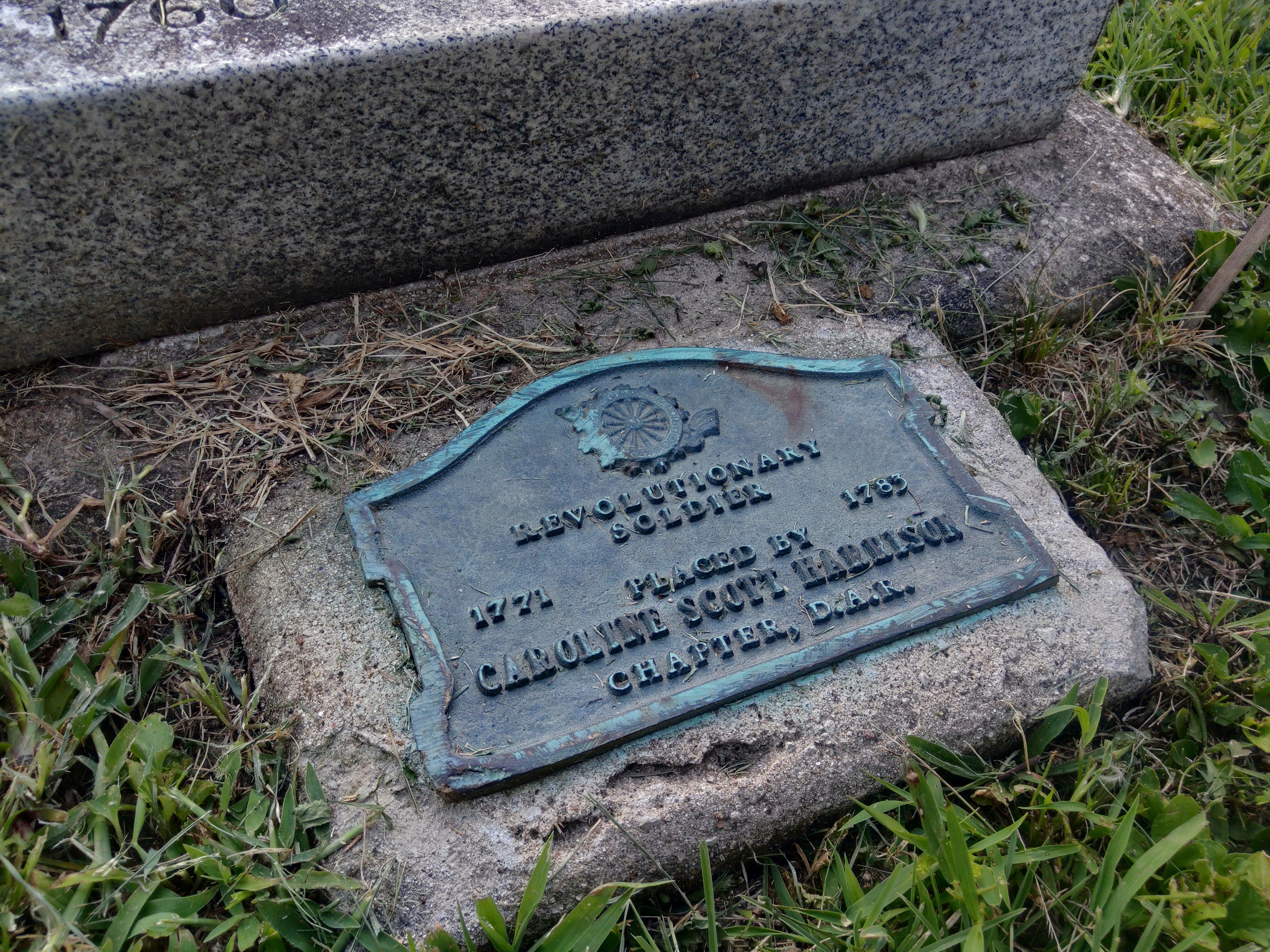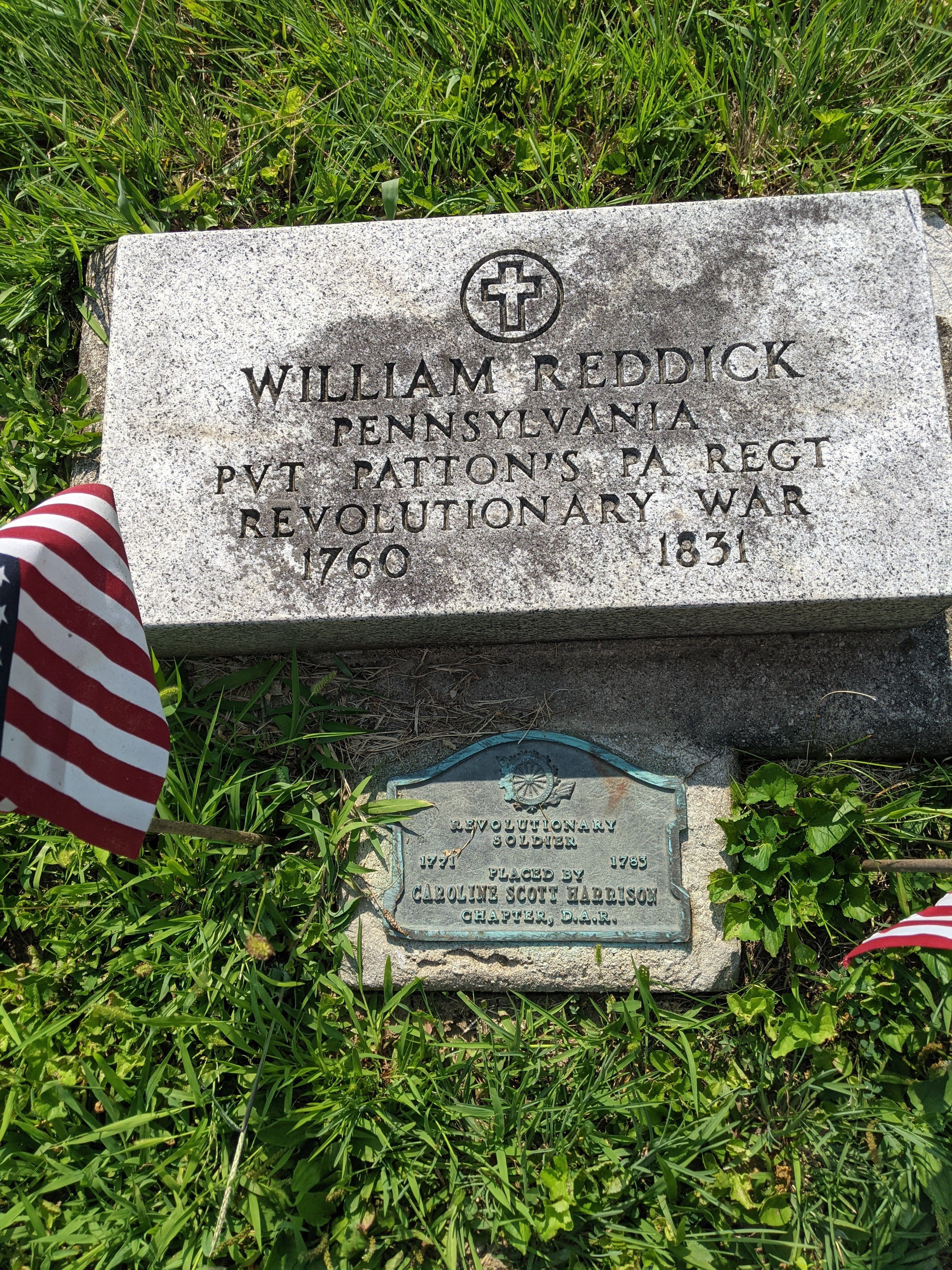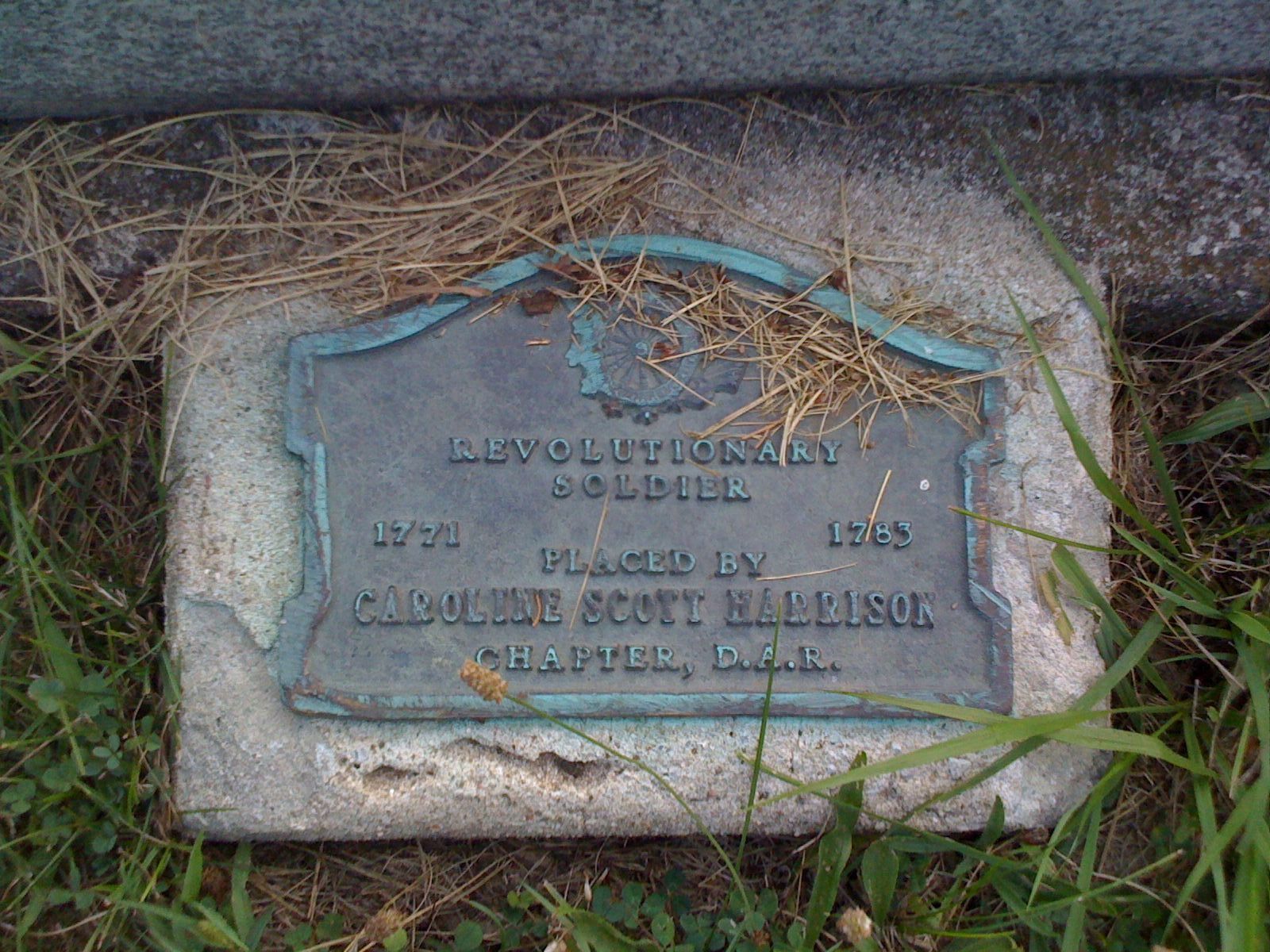He arrived in the colonies sometime between 1771 and 1773 apparently accompanied by his parents. He was bound over as an indentured servant in the weaver's trade. He was listed as a stocking weaver in military records. It is unknown as to exactly how old William was when he ran away from his servitude. He enlisted in Patton's Additional Regiment of the Pennsylvania Line in Philadelphia on 26 February, 1777 at the age of sixteen. He served as a fifer in Patton's Additional Regiment and was in the battles of Brandywine(Sep 1777), Germantown (Oct 1777), and Monmonth (June 1778). He, along with his regiment, spent the winter of 1777/78 at Valley Forge.
In January 1779, Patton's Regiment and Hartley's Additional Regiment merged to form the "New" 11th Pennsylvania. William's regiment was commanded by Lt. Col. Adam Hubley. This regiment was encamped at Middlebrook, New Jersey during the winter of 1778/79. In July 1779 they began the Sullivan Expedition into western New York to free the frontier from Indian attacks. A daily diary, which has survived, of this expedition was kept by Lt. Col Hubley. William's regiment, the "New" Pennsylvania 11th, was the advance scouting unit on the Expedition.
The "New" 11th Pennsylvania camped both the winters of 1779/80 and 1780/81 at Morristown, New Jersey. It was here on New Year's day 1781, the entire Pennsylvania Line held a munity and began a march to Philadelphia to confront George Washington because they lacked food, blankets and clothing, and had not recieved pay in a year. The munity was settled, the men were given furlough, and the army reorganized again.
In February 1781, William became a member of the 3rd Pennsylvania Division. He was at Yorktown when Cornwallis surrendered in September 1781. He mustered out of the Pennsylvania line in September 1783, having served six years and seven months of his life in the American Revolution.
He "returned" to near Lebanon, Pennsylvania at the close of the war and there married Margaret Trump in the fall of 1785. The family lived in that area a few years where the oldest children were born and then moved to Washington County, Pennsylvania around 1800. One year was spent in the backwoods of Virginia, when and where is unknown. William and his family then moved to Bracken County Kentucky where some of the younger children were born. During the War of 1812, William kept a ferry where the Bull Skin Creek empties into the Ohio River in Clermont County, Ohio. He and his family soon moved to Clermont County and lived there until the fall of 1824 when they came by covered wagon to Lawrence Twp. Marion County, Indiana.
Indianapolis and Marion County history tells that he entered 160 acres of land for his youngest son, Joshua at the mouth of the Mud Creek, just above Fall Creek. It is also recorded that he gave a piece of his land for the first graveyard in Lawrence Twp., that the first marriage performed and the first sermon preached in the township were accomplished in his cabin. He lived on this farm until his death, 3 Oct. 1831. He is buried in Spring Valley Cemetery on the grounds of Ft. Harrison. A DAR marker has been placed at his grave.
He was the father of ten children, all of whom but two came with him to Lawrence Township, Marion County Indiana.
He arrived in the colonies sometime between 1771 and 1773 apparently accompanied by his parents. He was bound over as an indentured servant in the weaver's trade. He was listed as a stocking weaver in military records. It is unknown as to exactly how old William was when he ran away from his servitude. He enlisted in Patton's Additional Regiment of the Pennsylvania Line in Philadelphia on 26 February, 1777 at the age of sixteen. He served as a fifer in Patton's Additional Regiment and was in the battles of Brandywine(Sep 1777), Germantown (Oct 1777), and Monmonth (June 1778). He, along with his regiment, spent the winter of 1777/78 at Valley Forge.
In January 1779, Patton's Regiment and Hartley's Additional Regiment merged to form the "New" 11th Pennsylvania. William's regiment was commanded by Lt. Col. Adam Hubley. This regiment was encamped at Middlebrook, New Jersey during the winter of 1778/79. In July 1779 they began the Sullivan Expedition into western New York to free the frontier from Indian attacks. A daily diary, which has survived, of this expedition was kept by Lt. Col Hubley. William's regiment, the "New" Pennsylvania 11th, was the advance scouting unit on the Expedition.
The "New" 11th Pennsylvania camped both the winters of 1779/80 and 1780/81 at Morristown, New Jersey. It was here on New Year's day 1781, the entire Pennsylvania Line held a munity and began a march to Philadelphia to confront George Washington because they lacked food, blankets and clothing, and had not recieved pay in a year. The munity was settled, the men were given furlough, and the army reorganized again.
In February 1781, William became a member of the 3rd Pennsylvania Division. He was at Yorktown when Cornwallis surrendered in September 1781. He mustered out of the Pennsylvania line in September 1783, having served six years and seven months of his life in the American Revolution.
He "returned" to near Lebanon, Pennsylvania at the close of the war and there married Margaret Trump in the fall of 1785. The family lived in that area a few years where the oldest children were born and then moved to Washington County, Pennsylvania around 1800. One year was spent in the backwoods of Virginia, when and where is unknown. William and his family then moved to Bracken County Kentucky where some of the younger children were born. During the War of 1812, William kept a ferry where the Bull Skin Creek empties into the Ohio River in Clermont County, Ohio. He and his family soon moved to Clermont County and lived there until the fall of 1824 when they came by covered wagon to Lawrence Twp. Marion County, Indiana.
Indianapolis and Marion County history tells that he entered 160 acres of land for his youngest son, Joshua at the mouth of the Mud Creek, just above Fall Creek. It is also recorded that he gave a piece of his land for the first graveyard in Lawrence Twp., that the first marriage performed and the first sermon preached in the township were accomplished in his cabin. He lived on this farm until his death, 3 Oct. 1831. He is buried in Spring Valley Cemetery on the grounds of Ft. Harrison. A DAR marker has been placed at his grave.
He was the father of ten children, all of whom but two came with him to Lawrence Township, Marion County Indiana.
Family Members
Advertisement
Records on Ancestry
Advertisement
